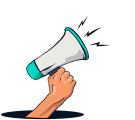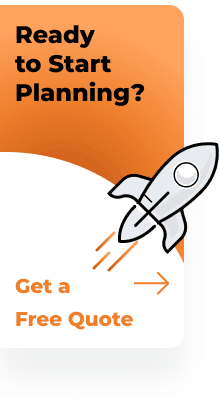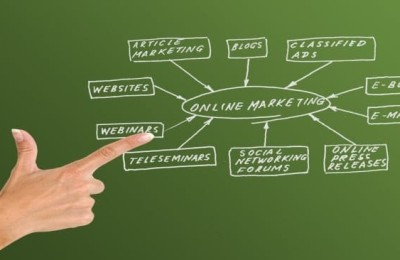Getting your content marketing strategy ‘on the map’ can be a powerful and invaluable tool for discovering new opportunities to grow.
Whether you are a seasoned veteran or a rookie in the field, one of the keys to success is understanding what is a content map, and how to create and use content maps as part of your overall content distribution plan.
Content mapping empowers brands with fresh insights into their ideal customer groups, leading them to unexplored channels they may never have had access to before, enticing even more prospects, and maximizing reach.
In this blog post, we will illustrate how by following effective website content mapping practices you can open up entire unseen worlds and begin approaching new audiences from multiple angles.
How to Use Content Mapping for Audience Expansion
As a digital marketing strategy, content maps can be an effective way to:
- Reach new audiences
- Expand your online presence
But what is a content map? Simply put, it’s a visual representation of your website’s content organized by user personas and stages of the buyer’s journey. By using a content map example, you can:
- See how the different pieces of content on your website fit together
- See how they address the needs and interests of your target audiences
- Understand how to create and distribute content that resonates with existing and potential customers
Implementing this strategy can help you attract, engage, and ultimately convert a wider range of customers.
Identify Your Existing Audience and Their Needs
Every website owner must identify their existing audience and their needs. Before creating content, you must map:
- Who your potential customers are
- The demographics of your potential customers
- The interests of your potential customers
This is where content mapping comes into play. What is a content map? It is an essential diagram that categorizes all the website content based on user needs.
It enables you to determine the type of content relevant to your audience and where on the website it should be placed. A user-friendly website content mapping organizes:
- Product information
- User reviews
- Blogs
- FAQs based on user behavior analysis
A content map example makes it much easier to understand the process, and it’s worth investing time to create one that works best for your website. It’s a great way to ensure you’re targeting your audience and producing content that meets their needs.
Find New Audiences to Target with Content Mapping
As marketers, we’re always looking for ways to expand our reach and attract new audiences. One effective strategy is a method of visualizing and planning website content to align with the needs and interests of target personas. But what is a content map?
Essentially, it’s a snapshot of your website’s pages and content organized by customer journey stages and personal pain points. By using a content map example, you can:
- Identify gaps in your current website content
- Plan new content that speaks directly to your target audience
With website content mapping, you can confidently create a content strategy that resonates with your intended readers, and in turn, attract new audiences to your site.
Explore How Different Types of Content Appeal to Different Audiences
As the digital landscape continues to evolve, businesses strive to create content that appeals to different audiences. While there are various approaches to crafting content, one powerful tool that businesses can utilize is content maps.
What is a content map? It is an outline of the different types of content that your website will contain, which allows you to plan, organize, and prioritize your content around your audience’s needs and online behavior.
By creating a content map, businesses can understand how different types of content will appeal to different audiences, such as:
- Infographics would be ideal for audiences that prefer visual aids
- Blogs are great for those who prefer to read
Moreover, a content map example can help businesses envision their ideal website layout and create a clear path to content success. In short, website content mapping is a valuable investment for businesses aiming to engage their audiences with effective content.
Tools For Content Mapping Success
Content mapping can be a powerful tool when it comes to improving the effectiveness of your website’s content. Content maps are visual representations of your website’s content, organized based on how it relates to your target audience.
By using specific tools for it, you can better understand your audience’s needs and interests and tailor your content to meet them. For example, a content map example might include a flowchart that maps out the various steps a visitor might take when navigating your website.
With this framework in mind, you can:
- Identify gaps in your content
- Develop a plan for filling them in with targeted high-quality content
Ultimately, successful website content mapping can help you deliver a more engaging and valuable experience for your visitors.
Utilize Data To Refine Your Strategies and Get Maximum Impact From Your Efforts
In today’s business landscape, utilizing data to refine your strategies is no longer a luxury, it’s a necessity. One effective tool that businesses can use to better understand their audience and refine their content strategies is a content map.
A content map is simply a visual representation of all the content on your website, organized by audience and stage in the customer journey.
By creating a content map and analyzing data on user behavior, businesses can:
- Understand what content is resonating with their audience
- Adjust their strategies accordingly
For example, if data shows that a particular piece of content is driving high engagement and conversions, businesses can focus their efforts on creating more content like that.
By employing content maps and other data-driven strategies, businesses can get maximum impact from their efforts and stand out from the competition.
Ultimately, content mapping is a powerful tool that can help any digital marketer uncover valuable information about their target audience and reach new potential customers without ever sacrificing the quality of their message.
It can also give marketers an idea of what type of content performs best and what audience engages with it the most. It allows brands to better understand how different types of media can be leveraged to reach multiple types of audiences, enabling them to optimize their campaigns.
With it, your digital marketing strategy will have the power to expand organically as you gain insights into your existing and potential customers.
If you’re ready to take your content marketing strategy to the next level by accurately targeting untapped standpoints, content mapping may be just what you need!









